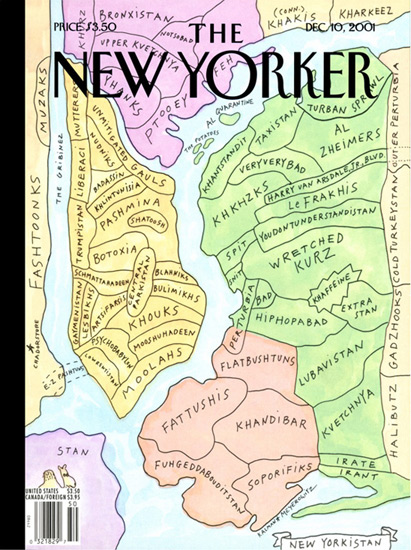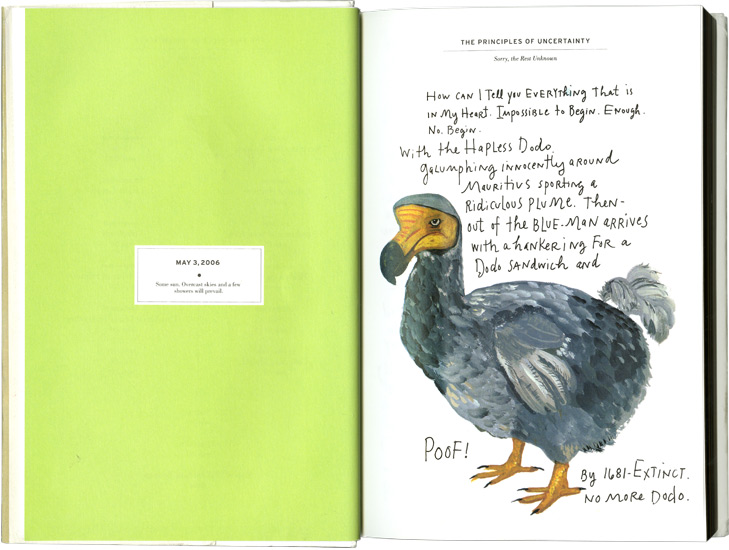
Maira Kalman was born in Tel Aviv, but emigrated with her family to New York at the young age of four and has remained in the City ever since. Kalman is most distinguished for her work as an illustrator and writer, she has published eighteen children’s books, including Ooh-la-la-Max in Love, What Pete Ate, and Why We Broke Up, as well as a myriad of books catered towards adults. Notably, her work has often appeared on the cover of The New Yorker. Maira’s art is distinct for being colorful and charismatic, often showcasing people from all walks of life (and sometimes her dog Pete too). Collections of her work have been showcased in a number of museums, including San Francisco’s very own Contemporary Jewish Museum.
In 2007, Kalman gave a TED talk in which she comments that she has always “been a dreamer,” and that she keeps imagination at the forefront of her work. She talks about her early life and how throughout college she thought she was going to be a writer until she realized that her “prose were terrible.” However, still wanting to tell a narrative story, she began drawing, telling stories through art, and so her career as an illustrator began.
We had the privilege of asking her a few questions about her career and work, below you will find the interview.

In “Why we Broke Up,” the book you worked on with Daniel Handler, a lot of stereotypical elements of the teenage experience are described. What was your teenage experience like?
I had a typical teenage experience. Massive amounts of insecurity, coupled with a great curiosity about life and a desire to be happy. I went to a lot of films, read a lot of books, listened to a lot of music.
As someone who outspokenly adores looking and seeing things, what is your opinion on the heightened visual consumerism that comes with social media?
It is nice to not be at the mercy of many people’s idea of a good or interesting time. In the solitude of looking at things around you on your own, there is a much inspiration and finding out who you are.
While being interviewed by Sedge Thomson, you said you “would rather work with a stick in the mud than on a computer,” but you also discussed the backlighting of your work for the New York Times website. Do you utilize technology while working, or do you stay true to more traditional methods? Or some combination of the two?
I write with a pen or pencil on paper. I paint on paper with gouache or oil. Then of course, it all gets translated into technology for print. Which is often pleasant to look at, but the ideas have nothing at all to do with technology.

With your numerous covers and other works for the New Yorker, and your other New York-centric work in mind, how does being a New Yorker affect and support your creative experience?
The unceasing energy and action of a diverse city like New York gives me a great sense of optimism. Look at all of us running around trying to do our work and live our lives. Heroic people all around.
What books and/or art shows are you looking forward to in 2017?
I am in the midst of reading In Search of Lost Time by Marcel Proust. That will take me another three years. So most other books will have to wait. I am looking forward to the unknown.
Questions asked by Audrey Kalman, article composed by Liv Jenks.






